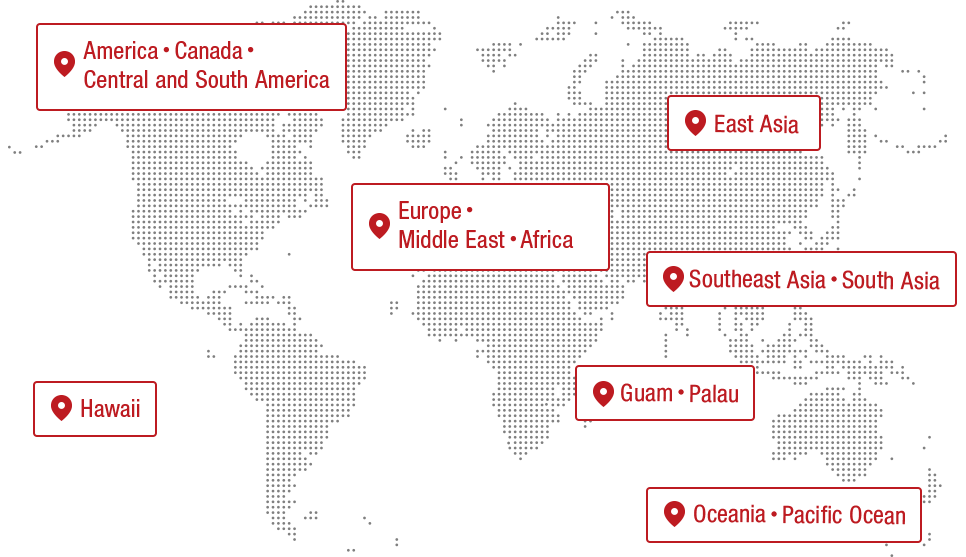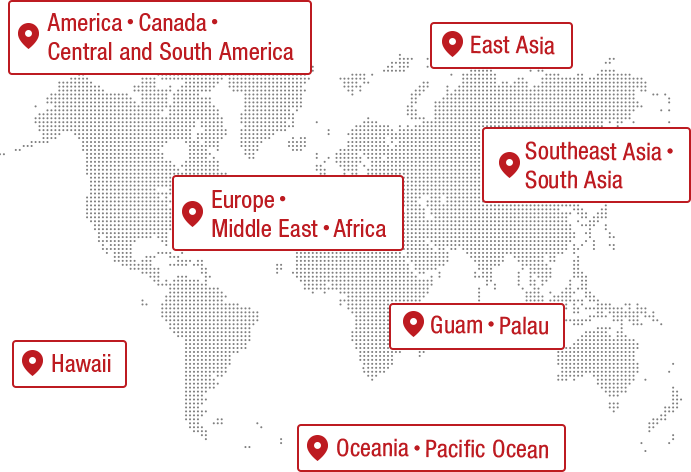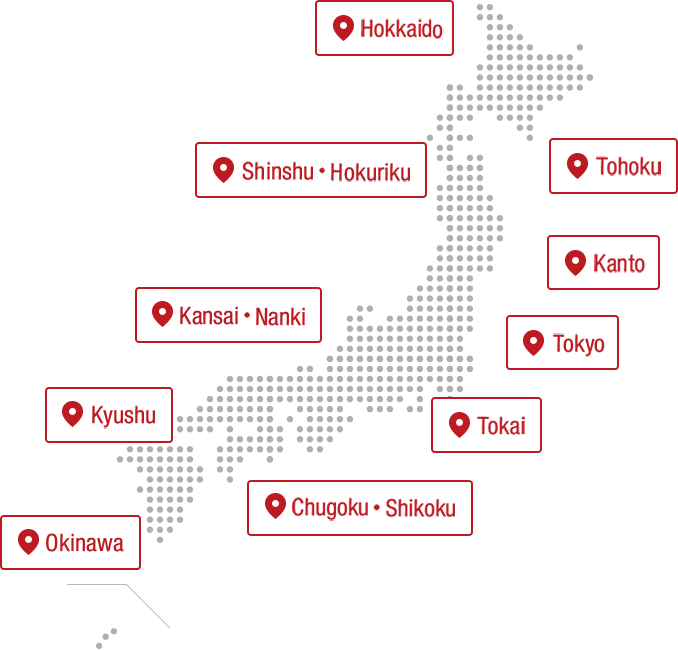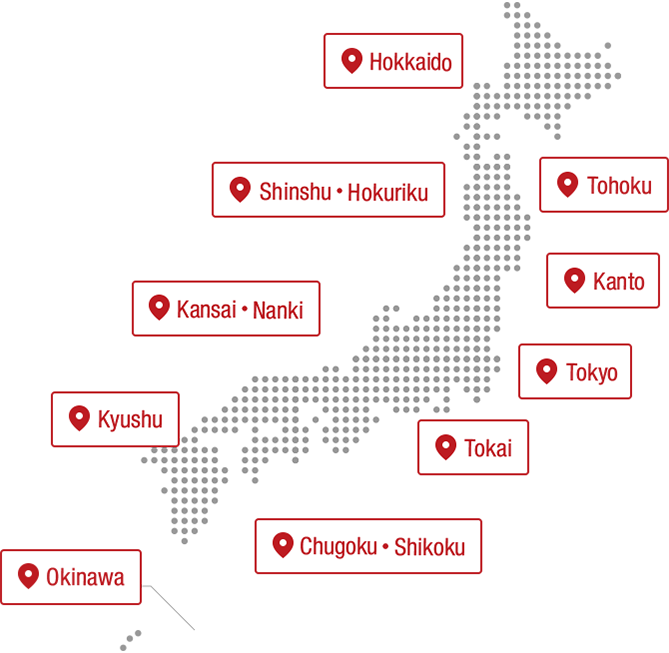The guest rooms on the 10th floor are equipped with sidewall panels (in-flight walls) and seats that are actually used inside airplanes, creating a space that is full of realism. From the windows you can get a panoramic view of Tokyo Bay, and depending on the wind direction you may even be able to see planes approaching and landing at Haneda Airport.
Through Wingroom, we want to provide our customers with a "new way to enjoy flying." In this article, we will tell you the background to how we made this dream a reality.
We offer concept rooms that can only be experienced by using the "real thing."
Yatagai: "The hotel industry is currently implementing various measures to meet the diverse needs of its customers. In the midst of this, Tokyu Hotel approached us and said, 'We want to create a room that will delight aviation fans while utilizing the strengths of hotels,' and so the 'Wing Room' project began."
These are the words of Yatagai of the JAL Engineering Parts Service Center.

Yatagai: "In particular, the Tokyo Bay Tokyu Hotel faces the challenge of being heavily dependent on Tokyo Disney Resort demand due to its location in the Shin-Urayasu area. By cultivating a new customer base with different objectives, we needed to create added value that was independent of price competition and fluctuations in demand.
So when we explained to Tokyo Bay Tokyu Hotel about JAL's then fledgling initiative to use recycled materials, they sympathized with our ideas and decided to create a "concept room that can only be experienced by using real airplane materials."
*A product development and sales project that began in October 2021 to make pouches, bags, and other items using discarded aircraft parts. In addition to reducing waste, the project aims to "create products that make air travel feel more familiar."
This was made possible by young professionals with extensive knowledge of airplanes.
The young JAL engineering team (mechanics team) was the driving force behind the creation of the concept room. As the team closest to aircraft parts, they were able to realize the things that were important to them.
Yatagai: "What was important to us was to stick to the real thing. Because of the current situation, many customers are unable to travel even if they want to, so we aimed to provide a new way to enjoy flying by recreating the interior of a realistic plane in the hotel rooms using real plane parts and amenities."
The creation of this concept room was also the start of an initiative to provide new entertainment using large aircraft parts instead of discarding them. He says that they were working to make the most of the various assets that the JAL Group has in a good way and not to leave things half-baked.
Yatagai: "This project was started by our mechanics, who pooled their ideas together. I think it's only because we are professionals who know everything about airplanes that we have such a strong desire to make use of discarded parts and are able to think of ways to make the most of them."
By turning ideas into reality, we receive recognition from society, which in turn informs us of demand and serves as a source of new ideas. Creating this cycle is one of the most important achievements in developing our waste material utilization business.

Additionally, the idea of turning the wing room into a photogenic space was the idea of a young mechanic. There are many iconic items scattered throughout the room, and the mechanic focused on how they looked, offering specific suggestions.
Yatagai: "We had a lot of trouble gathering materials from within the company, such as airplane seats and carpets. But it was worth it, as we have created a concept room that will have an impact even when you just look at a photo."
Making the experience of being inside an aircraft even more realistic. Even the invisible parts are carefully designed
How can we turn ideas for using waste materials into reality? Of course, it is essential to ensure safety as well as appearance. The skills of our mechanics shine even in the parts that cannot be seen.

Yatagai: "We created the exhibit while re-examining the properties of each of the scrap parts we used, reinforcing them and selecting materials. For example, the shape of an airplane's sidewall panels (the walls inside the plane) is curved to match the curvature of the fuselage. To install them inside the square passenger compartment, we used a technique to bend the aluminum reinforcing material into a curve like a Japanese sword, which is also an example of the technical skill of airplane mechanics. We also used scrap wood from wooden boxes used for transporting airplane parts as the base and framework to support the exhibits. We carefully selected the materials and put a lot of thought into even the parts that are not directly visible."

Side wall panel. The window shades are decorated with pictures of scenery during flight. Please open the shades and enjoy the feeling of flying.
Yatagai: "Next to the sidewall panels, we installed 'front seats,' of which there are a limited number per aircraft. These are seats with tables that come out from the armrests. This is because we wanted passengers to feel as comfortable as possible while sitting on an airplane."

Front seats. Three seats are arranged so that families can enjoy the car.
Yatagai: "In order to generate lift (the force that lifts the aircraft into the air), the aircraft must always maintain a tilted posture with the front facing up during flight. Therefore, tables adjusted for use on airplanes are designed to be slightly tilted, but we made detailed adjustments to make it easy to use on the ground as well."
This may be something that you would not notice during normal use, but we made full use of the skills of our mechanics to complete the concept room.
In addition to the seats, we have also installed a variety of other items so that passengers can enjoy the in-flight amenities that they normally do not have access to. Some of these items have been redesigned to be more familiar.
Yatagai: "Next to the seats we have installed meal carts that can actually move and have doors that can open and close. These are usually used by flight attendants to serve drinks and other items to passengers, but passengers rarely have the opportunity to touch them on board. In the Wing Room, please come and enjoy looking at them up close and moving them around."

The carpet under the seat is also the same one that is actually used on airplanes. We chose one from several different types to match the atmosphere of the room, and cut it into the shape of an airplane to give it a cute finish.

Yatagai: "The turbine blade (one of the wings built into the turbine that powers the aircraft) has been reborn as an objet d'art that indicates the room number. It was made from scraps of engines that were actually used at the Engine Maintenance Center Parts Maintenance Department in Narita."
In this way, JAL aims to diversify the ways in which waste materials are used, such as by using them in art creations.
The same service as in the air, right in your hotel room
Yatagai: "The amenities provided include a pouch, tissues, earplugs, and an eye mask. This amenity kit was created in collaboration with the Parisian brand Maison Kitsuné. Normally, these are only available to passengers flying in JAL Business Class, but we have decided to distribute them to guests staying in the Wing Room as well."

Amenity kit (for hygiene reasons, lip balm, masks, and toothbrushes have been removed)
Yatagai: "The commemorative card we give to our guests is modeled after an actual airplane boarding pass. When you hold it up to the light, you can see the plane as a watermark. We put a lot of thought into it so that you can enjoy every detail."

Stay commemorative card
Expanding the scope of waste utilization and providing services that more people can enjoy
Yatagai: "I feel that the provision of the wing room this time was a huge step forward in JAL's efforts to utilize waste materials. JAL will continue to make further efforts to reduce waste through the reuse of aircraft parts, and in the future we would like to expand the scope of use beyond guest rooms, such as by displaying them in hotel lobbies and public spaces in commercial facilities."
JAL will continue to develop services that allow you to enjoy air travel from various perspectives. If you have read this article and are interested, please visit the Wing Room at Tokyo Bay Tokyu Hotel and experience a new way to travel by staying in the in-flight space of a JAL flight.
Tokyo Bay Tokyu Hotel
| address | : | 7-2-3 Hinode, Urayasu City, Chiba Prefecture |
|---|---|---|
| phone | : | 047-390-0109 |
| web | : | https://www.tokyuhotels.co.jp/tokyobay-h/ |
Book your Wing Room here
We'll take you behind the scenes of JAL's work, including inside stories on the introduction of the A350 and the development of in-flight meal menus.
The contents published are accurate at the time of publication and are subject to change.












